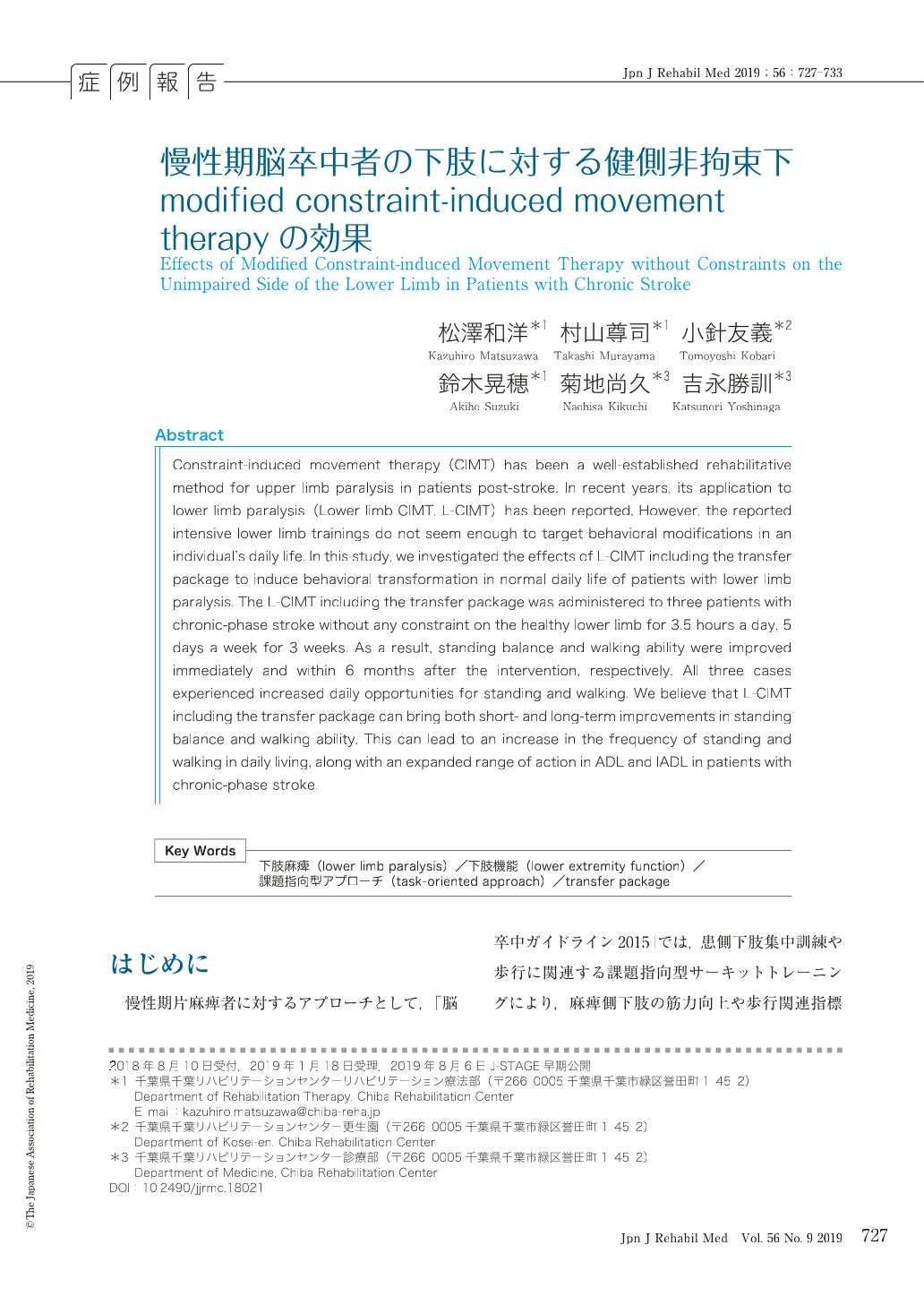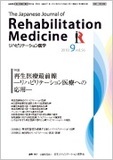Japanese
English
- 販売していません
- Abstract 文献概要
- 1ページ目 Look Inside
- 参考文献 Reference
はじめに
慢性期片麻痺者に対するアプローチとして,「脳卒中ガイドライン2015」では,患側下肢集中訓練や歩行に関連する課題指向型サーキットトレーニングにより,麻痺側下肢の筋力向上や歩行関連指標の改善が得られるとしている1).しかし,これらの報告では,セラピストが事前に決めた立位・歩行に関連する課題を行うことを介入としており,患者の実生活における課題や目標は反映されていない.さらに,機能改善を,いかに実用的な立位・歩行での生活活動へと結びつけるかが重要であるが,そのような手法は確立されていない.
一方で,上肢麻痺に対するアプローチに,constraint-induced movement therapy(CIMT)がある2, 3).CIMTは,機能障害を課題指向的に改善させ,改善した機能を生活活動につなげるアプローチである.上肢CIMTを構成するうえで重要な要素が,麻痺側上肢の行動変容を促進する行動学的手法transfer package(TP)である4).TPは,患者の実生活における目標を聴取し,訓練課題へと反映させるツールでもある.さらに,TPを含むCIMTにおいては,TPを含まないCIMTに比べ,上肢機能,生活活動における麻痺側上肢の使用頻度が有意に改善しただけでなく,6カ月間の長期にわたり改善が継続しており,生活場面における麻痺側肢使用の定着が報告されている5).近年では,下肢麻痺に対しCIMTを実践した報告6-10)も散見され,歩行能力や麻痺側下肢使用頻度の改善が報告されている.
このことから,下肢麻痺に対する集中訓練として,課題指向型アプローチにTPを含むCIMTを下肢に応用(以下,L-CIMT)することで,患者の実生活における課題や目標を訓練課題に反映させ,短期的・長期的な機能改善と生活活動における実用的な立位,歩行の定着が期待される.今回,車椅子を併用する慢性期脳卒中片麻痺者3例に対し,平日3.5時間・3週間のL-CIMTを実施し,日常生活における実用的な立位,歩行の獲得と6カ月間の長期にわたる,立位バランス,歩行能力の改善を得たので報告する.
Constraint-induced movement therapy (CIMT) has been a well-established rehabilitative method for upper limb paralysis in patients post-stroke. In recent years, its application to lower limb paralysis (Lower limb CIMT, L-CIMT) has been reported. However, the reported intensive lower limb trainings do not seem enough to target behavioral modifications in an individual's daily life. In this study, we investigated the effects of L-CIMT including the transfer package to induce behavioral transformation in normal daily life of patients with lower limb paralysis. The L-CIMT including the transfer package was administered to three patients with chronic-phase stroke without any constraint on the healthy lower limb for 3.5 hours a day, 5 days a week for 3 weeks. As a result, standing balance and walking ability were improved immediately and within 6 months after the intervention, respectively. All three cases experienced increased daily opportunities for standing and walking. We believe that L-CIMT including the transfer package can bring both short- and long-term improvements in standing balance and walking ability. This can lead to an increase in the frequency of standing and walking in daily living, along with an expanded range of action in ADL and IADL in patients with chronic-phase stroke.

Copyright © 2019, The Japanese Association of Rehabilitation Medicine. All rights reserved.


